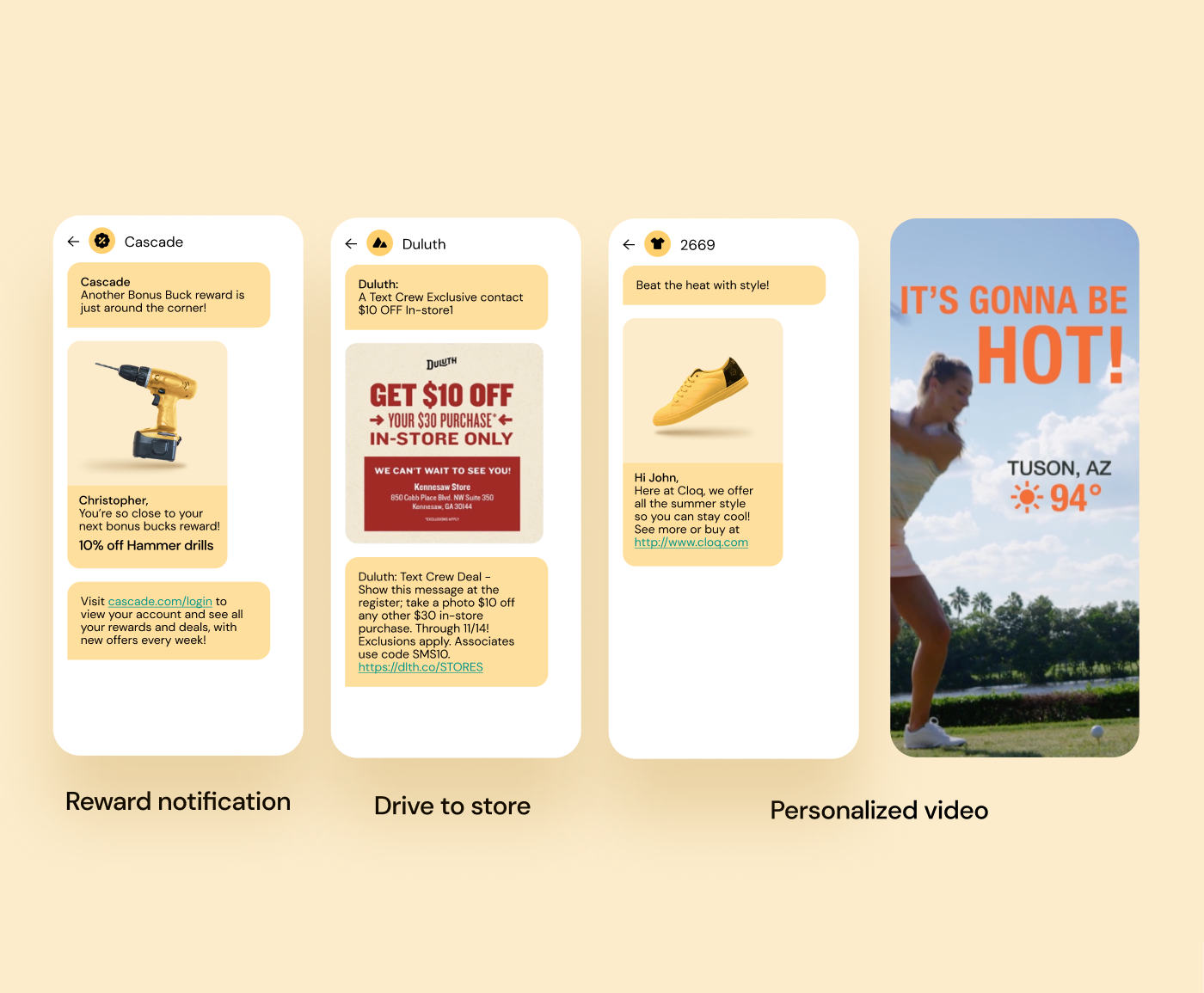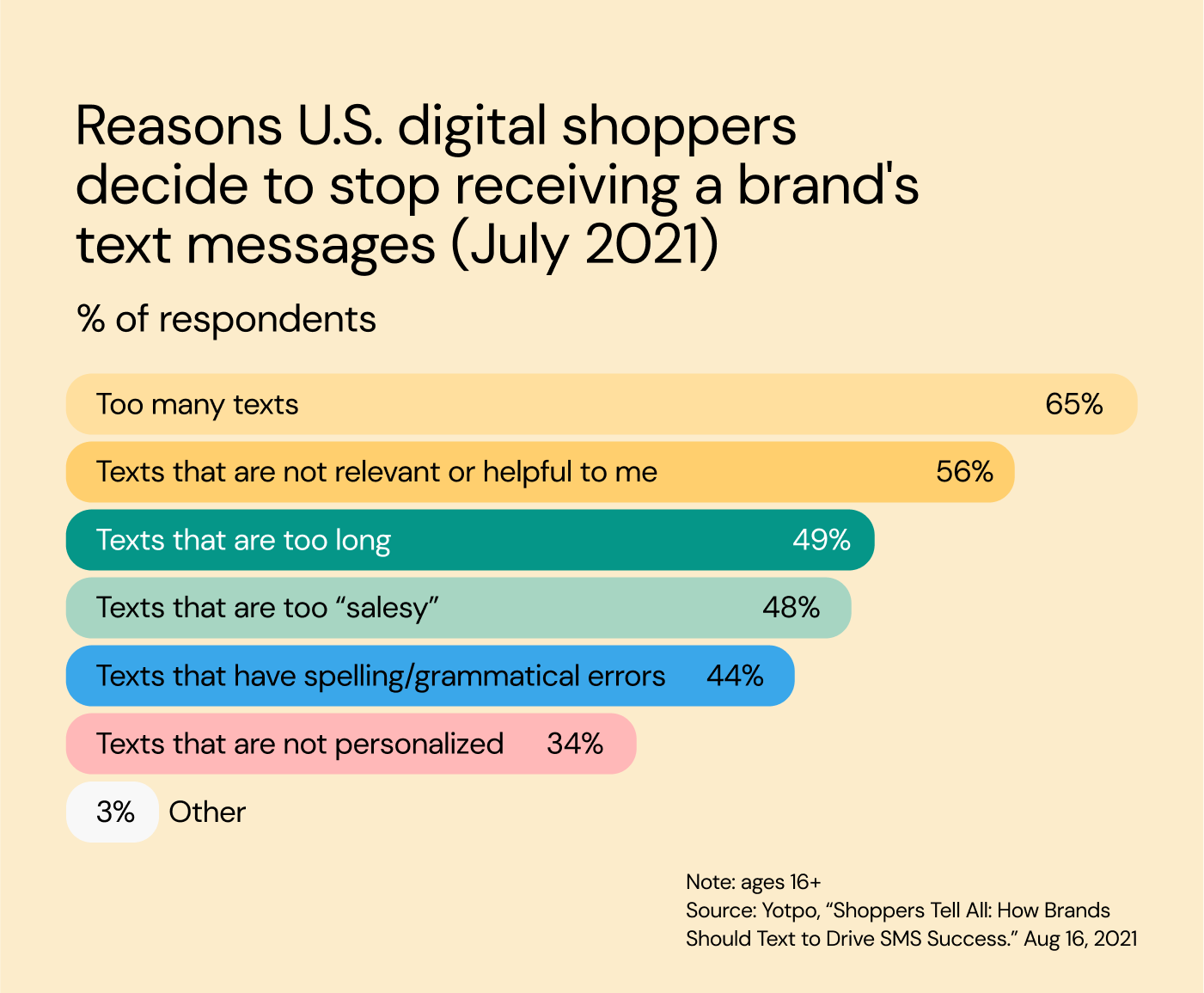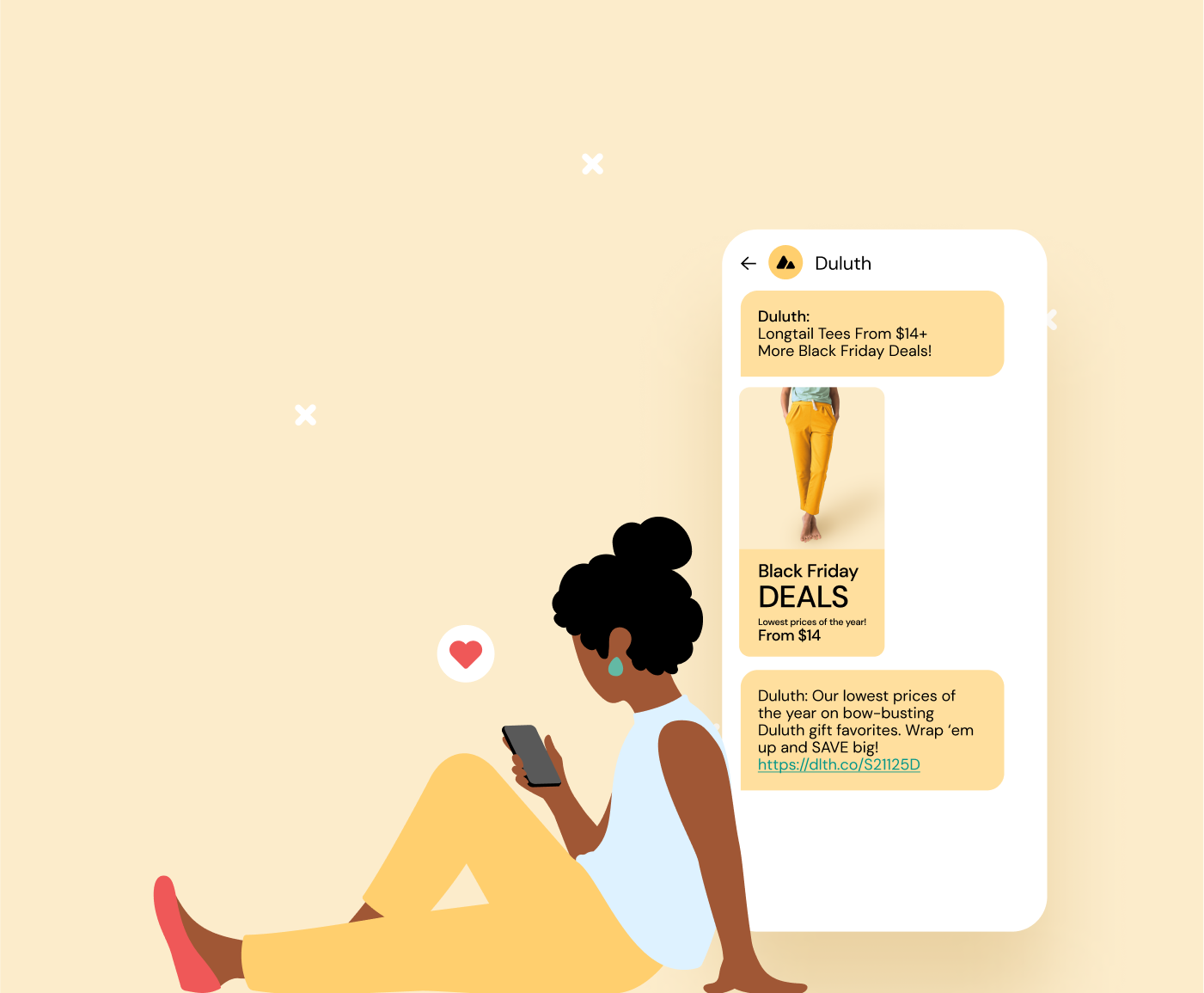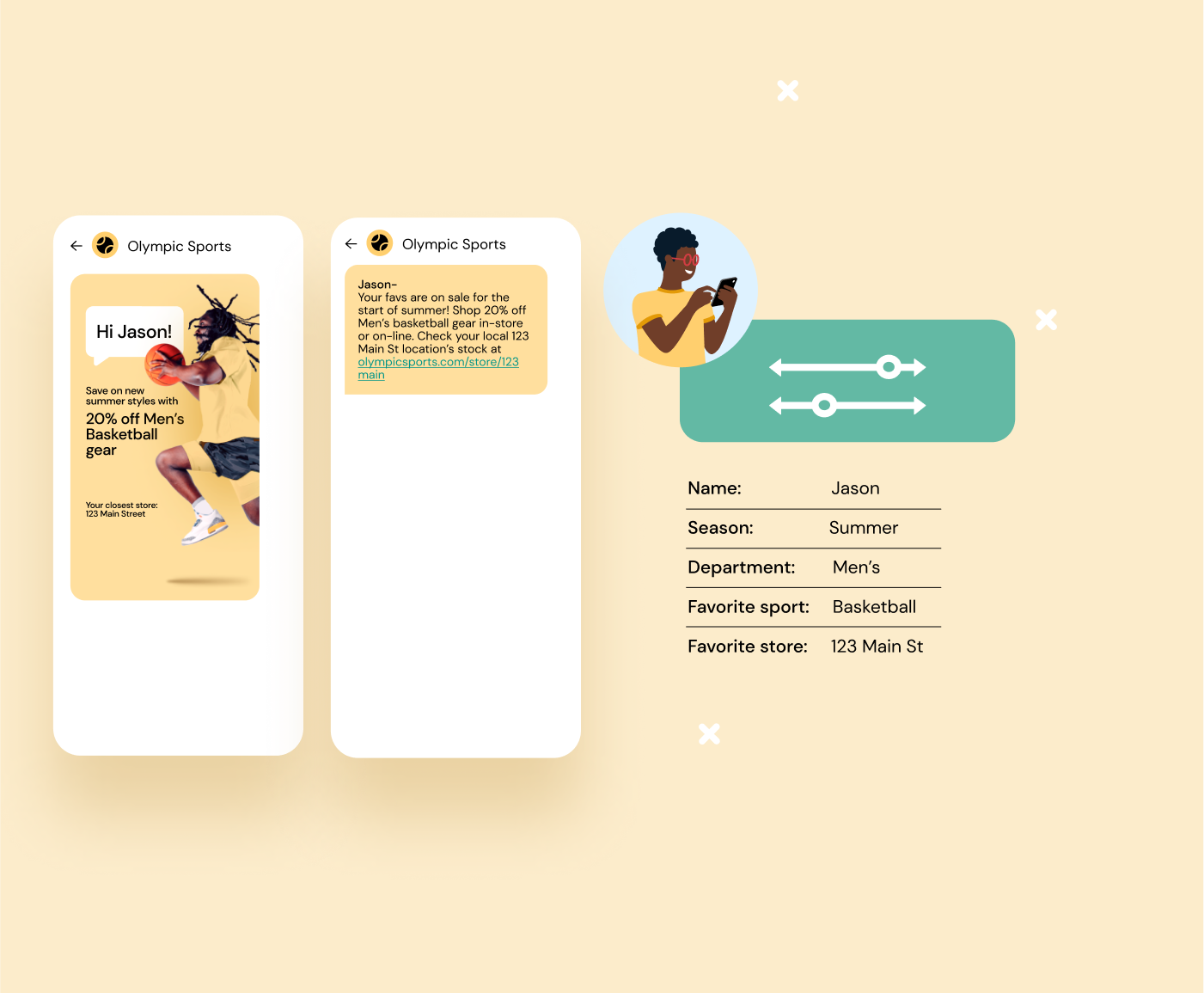Insights, Products
SMS for retail: Benefits, best practices, and use cases

Insights, Products

In the ever-evolving retail landscape, retail SMS marketing is a powerful tool for businesses to connect with their customers in more personalized and engaging ways. Retail SMS, a form of mobile marketing, isn’t just about sending promotional messages; it’s about building stronger relationships, enhancing customer engagement and, ultimately, driving profits.
In this blog post, we’ll guide you through the advantages, best practices, and use cases of SMS marketing specifically tailored for the retail industry. Read on to discover how SMS for retail can transform your customer engagement, with impressive open rates of over 80%. Among other issues, we’ll cover:
SMS for retail is a strategic approach where businesses leverage text messaging to achieve their marketing objectives. From delivering targeted communications to offering customized promotions and discounts, SMS marketing for retail is a potent tool to get your brand noticed.
SMS and mobile messaging are often underused in the retail sector, especially considering SMS marketing campaigns have shown impressive results, boasting open rates of over 80% — significantly higher than email open rates. And with opt-out rates of less than 3%, the potential of SMS for retail just can’t be denied.
It’s all about connecting with customers — good SMS marketing opens the door for crafting meaningful conversations that convert. And engaging customers on mobile is a critical part of that journey.
Building a top-notch retail SMS marketing strategy can be game-changing in many ways. Some of the benefits you can expect include:
Understanding the use cases for SMS marketing in retail is crucial to harnessing its full potential.
With SMS marketing, retailers have a massive range of opportunities to engage customers at every stage of the customer lifecycle. We’ve listed some of the most effective use cases below, but lifecycle messaging should be unique to your brand experience. The only limit is your imagination!

Here are some scenarios where retail SMS should be deployed to engage and inspire action:
Delivering the right message to the customer and having a value proposition articulating the benefits of opting in for promotional messaging are key to driving opt-ins and conversions.
Here are a few best practices to keep in mind when crafting your SMS retail marketing campaigns and calls-to-action (CTAs).
The first step to retail SMS messaging success is a robust promotional campaign to drive subscriber opt-ins. Make sure you consider value proposition, incentives, and channels you’ll need to reach your customers and inspire action.
Your value proposition should clearly articulate why customers should sign up. That could include loyalty program perks like exclusive offers, first-to-know about product drops and flash sales, and personalized recommendations.
You can further incentivize sign-ups with can’t-resist offers, like 30% off the next order when someone signs up for texts.
List growth success is very dependent on where, how, and how often you make people aware of your SMS program. Encouraging opt-ins across your existing marketing channels, such as email, in-store, and social media can make a big difference in driving up opt-in rates.
High-impact CTA placements include the following:
When setting up your messaging program, keep these simple guidelines in mind:
DO: Segment your audience for personalized messaging
DO: Use shortened URLs and easy-to-spell keywords
DO: Maintain a record of opt-ins and opt-outs
DON’T: Send messages before 8 am or after 9 pm
DON’T: Send more than 1-2x per week
DON’T: Send messages after user has opted out. Compliance is non-negotiable!

As the diagram shows, receiving too many texts is the primary reason potential or existing customers opt out of receiving text communications. Used incorrectly, SMS for retail can drive away the very people you’re trying to reach!
The most relevant media, like MMS messaging, can amp up SMS marketing campaigns. MMS messaging allows images, gifs, and videos, offering a more immersive and engaging experience.

MMS messaging allows retailers to showcase products, promotions, app downloads, and offers in a more immersive and visually appealing manner, increasing the impact and effectiveness of their campaigns.
Mobile messaging is intimate by nature: it’s where friends and family talk daily. When brands access this privileged space, they should respect it and make messages relevant and personalized.
Customizing retail SMS messages according to customer preferences and behavior can also result in a more captivating experience; by segmenting audiences and tailoring messaging, you can create more relevant and valuable SMS for retail marketing campaigns.

Craft messages that resonate with your customers and inspire them to take action. Taking full advantage of SMS for retail — and creating messages that convert — means using clear language, compelling CTAs, and personalized messaging to enable meaningful conversations and deliver real value to your customers.
For example, a clothing retail store could start with an email marketing campaign to announce the upcoming summer collection. Following the email, an SMS could be sent providing an exclusive discount code for early access to the collection. The combination of the two acts as a multiplier, driving increased engagement.
Also, consider using technologies like Artificial Intelligence (AI) to craft messages — recent developments in the field are transforming how chatbots can personalize, understand, and engage with customers. AI and Natural Language Understanding (NLU) technology can understand the intent behind a customer’s message and respond instantly using everyday language, making intelligent, two-way conversations between businesses and customers possible 24/7 — even when human agents aren’t online to help.
SMS marketing for retail is a next-level way for retailers to connect with customers, build relationships, and drive sales. By following best practices, retailers can capitalize on SMS marketing to boost their overall marketing strategy. As you start your retail SMSmarketing journey, prioritize customer engagement and satisfaction to make the most of this powerful communication tool!